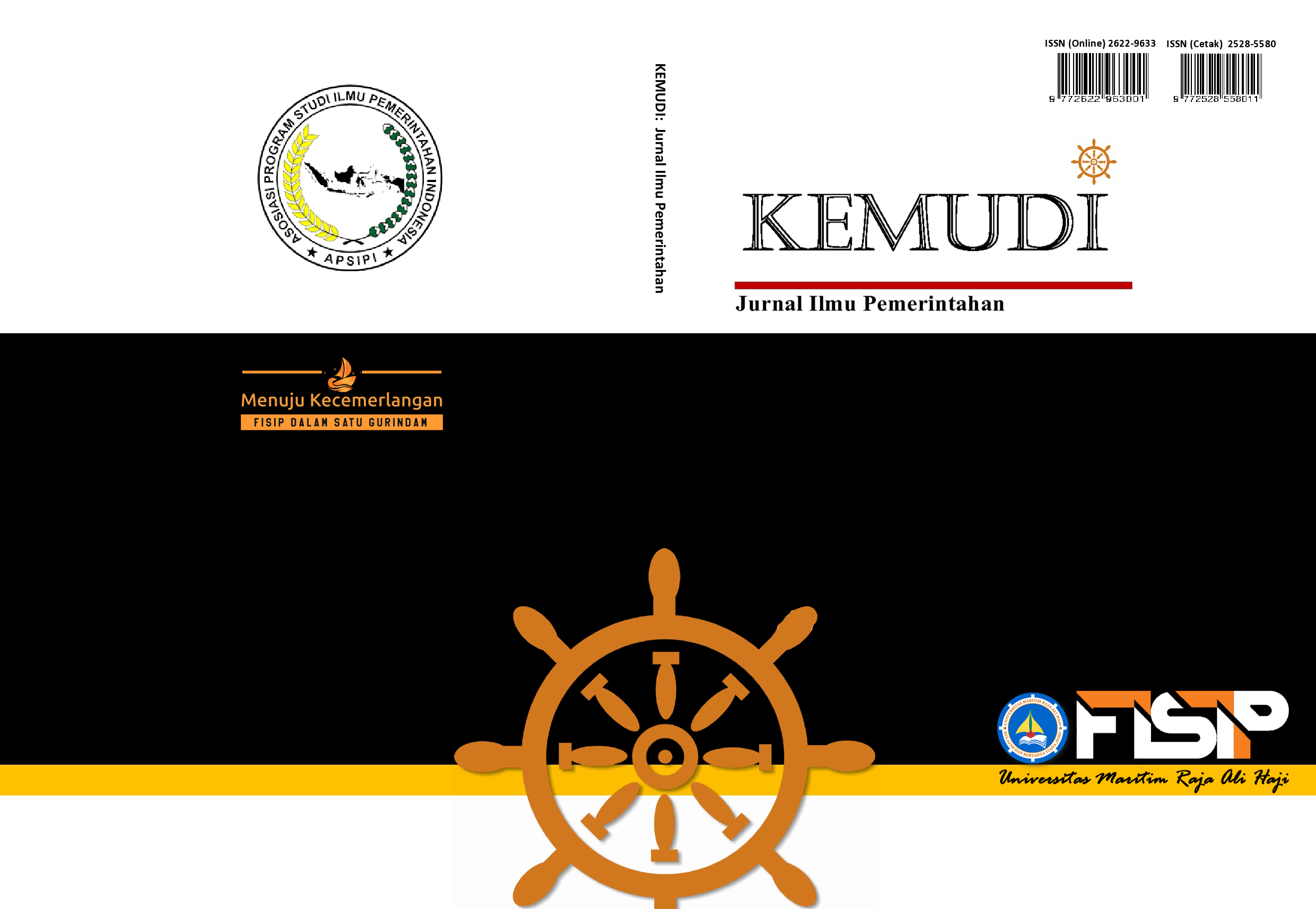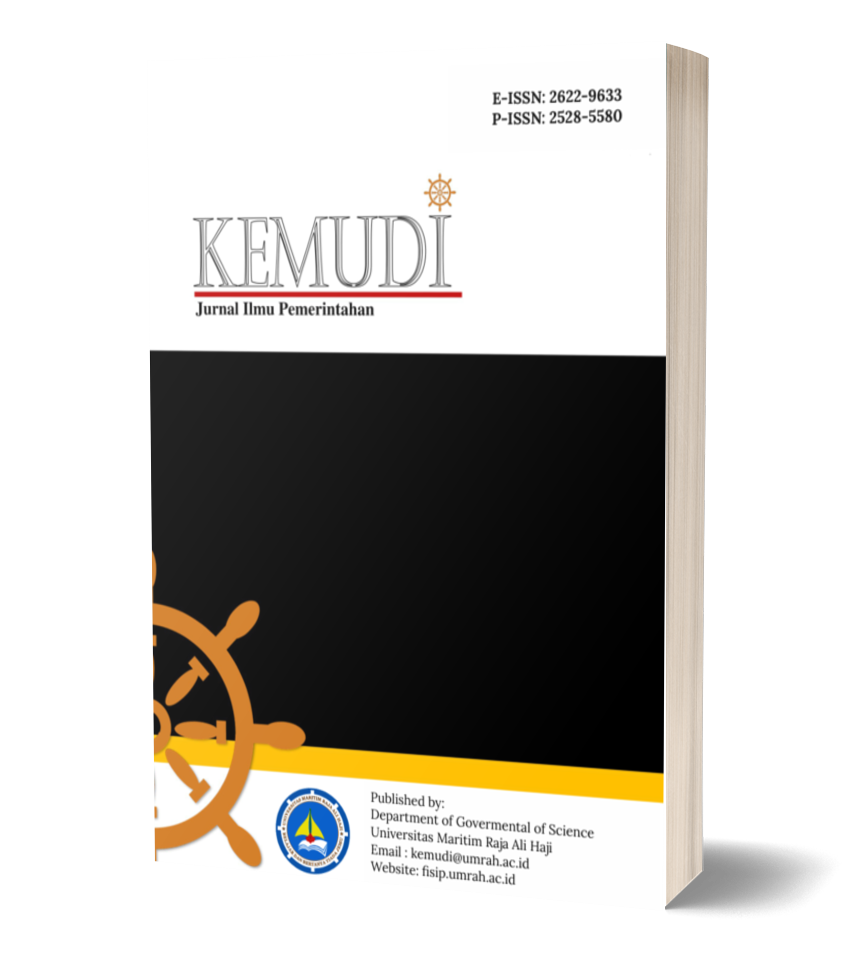Star Wars: Comparing Military Space Power Among Major Nations
DOI:
https://doi.org/10.31629/kemudi.v9i2.7070Keywords:
Space technology, Military power, United States, China, RussiaAbstract
Advancements in space technology have significantly altered military and geopolitical dynamics worldwide. This research aims to explore the space military capabilities of major powers, specifically the United States, China, and Russia. Utilizing a qualitative method that includes literature review and case analysis, this study examines the latest developments in space technology, the military strategies employed, and the geopolitical impacts arising from competition in this domain. The findings indicate that these three countries enhance their space capabilities in different ways, such as the establishment of the Space Force by the U.S., the launch of the BeiDou navigation system by China, and the strengthening of the Aerospace Force by Russia. Additionally, this research highlights new challenges in maintaining global stability, where reliance on space technology may increase security risks. By understanding the strengths and weaknesses of each country, this study provides deeper insights into the dynamics of global power in the era of space.
Downloads
References
Abbas Awan, F., & Javaid, U. (2020). Space Militarization Race among China-Russia and USA: Implications for South Asia. A Research Journal of South Asian Studies 87 South Asian Studies A Research Journal of South Asian Studies, 35(1), 87–100. http://journals.pu.edu.pk/journals/index.php/IJSAS/article/view/4106
Aliberti, M., Cappella, M., & Hrozensky, T. (2019). Measuring Space Power: A Theoretical and Empirical Investigation on Europe. European Space Policy Institute.
Awati, R. (2024). Electronic Intelligence (ELINT). TechTarget. https://www.techtarget.com/whatis/definition/ELINT-electronic-intelligence
Bendett, S., Boulègue, M., Connolly, R., Konaev, M., Podvig, P., & Zysk, K. (2021). Advanced military technology in Russia. September, 36–37. https://www.chathamhouse.org/sites/default/files/2021-09/2021-09-23-advanced-military-technology-in-russia-bendett-et-al.pdf
Boucher, C. (2022). On Space War. Modern War Institute at West Point. https://mwi.westpoint.edu/on-space-war/
Creswell, J. W. (2013). Qualitative Inquiry & Research Design: Choosing among Five Approaches (3rd ed.). SAGE Publications.
Creswell, J. W. (2014). Research design: qualitative, quantitative, and mixed methods approaches (4th ed.). SAGE Publications.
Dawei, Y., & Jia, D. (2023). China’s own GPS, BeiDou satellite system, comes down to Earth. Nikkei Asia. https://asia.nikkei.com/Spotlight/Caixin/China-s-own-GPS-BeiDou-satellite-system-comes-down-to-Earth
ESPI. (2020). Europe, Space and Defence: From “Space for Defence” to “Defence of Space. European Space Policy Institute.
Harvey, B. (2022). Military space – how worried should we be? Room, Space Journal of Asgardia. https://room.eu.com/article/military-space-how-worried-should-we-be
Jones, A. (2024). China unveils video of its moon base plans, which weirdly includes a NASA space shuttle. Space.Com. https://www.space.com/china-moon-base-international-lunar-research-station-video
Kimball, D. G. (2024). Keeping Outer Space Nuclear Weapons Free. Arms Control Association. https://www.armscontrol.org/act/2024-03/focus/keeping-outer-space-nuclear-weapons-free
Kube, C., & Luce, D. De. (2023). How China is challenging the U.S. military’s dominance in space. NBC News. https://www.nbcnews.com/politics/national-security/china-challenging-us-militarys-dominance-space-rcna128993
Muhammad, A. N. (2019). Revisiting U.S – China Aggressive Use of Outer Space: a Comprehensive International Law Outlook Towards Military Activities in Outer Space. Indonesian Journal of International Law, 16(4), 473–503. https://doi.org/10.17304/ijil.vol16.4.761
Nadarajah, H. (2024). The Emergence of New Actors in Space. Asia Pacific Foundation of Canada. https://www.asiapacific.ca/publication/space-intro-emergence-new-actors
Nagashima, J. (2020). The Militarization of Space and its Transformation into a Warfighting Domain. International Information Network Analysis. https://www.spf.org/iina/en/articles/nagashima_02.html
Nugraha, T. R., & Amalia, P. (2019). Militerisasi Ruang Angkasa, Quo Vadis Indonesia? Mimbar Hukum-Fakultas Hukum …, 377–391. https://journal.ugm.ac.id/jmh/article/view/52601
Oniosun, T. I. (2022). A Review of Country Classification Frameworks in the Space Sector: Priorities, Limitations, and Global Considerations. Space Policy. Space Policy, 61. https://doi.org/https://doi.org/10.1016/j.spacepol.2022.101491
Pollpeter, K., Barrett, E., Edmonds, J., Kerrigan, A., & Taffer, A. (2023). China-Russia Space Cooperation: The Strategic, Military, Diplomatic, and Economic Implications of a Growing Relationship. China Aerospace Studies Institute. https://www.cna.org/reports/2023/06/china-russia-space-cooperation-may-2023
Pradana, M. E. (2022). Astropolitik: Teknologi, Militerisasi Dan Peperangan Antariksa. Jurnal Polinter : Kajian Politik Dan Hubungan Internasional, 8(1), 122–135. https://doi.org/10.52447/polinter.v8i1.5533
Sangkaran, J. (2022). Russia’s Anti-Satellite Weapons: An Asymmetric Response to U.S. Aerospace Superiority. Arms Control Association. https://www.armscontrol.org/act/2022-03/features/russias-anti-satellite-weapons-asymmetric-response-us-aerospace-superiority
Steer, C. (2020). Why Outer Space Matters for National and International Security, A Report by the Center for Ethics and the Rule of Law (CERL). Center for Ethics and the Rule of Law University of Pennsylvania, 35.
Sugiyono. (2017). Metode Penelitian Kuantitatif, Kualitatif, dan R&D. CV. Alfabeta.
Tingley, B. (2022). A Chinese Satellite Just Grappled Another And Pulled It Out Of Orbit. The Warzone. https://www.twz.com/44054/a-chinese-satellite-just-grappled-another-and-pulled-it-out-of-orbit
Tingley, B. (2023). What is the U.S. Space Force and what does it do? Space.Com. https://www.space.com/us-space-force-history-mission-capabilities
Tingley, B. (2024). Russia’s nuclear anti-satellite weapon poses “no immediate threat” to Earth, White House says. Space.Com. https://www.space.com/russia-nuclear-anti-satellite-weapon-no-threat-to-earth
Wehtje, B. (2023). Increased Militarisation of Space – A New Realm of Security. Beyond the Horizon. https://behorizon.org/increased-militarisation-of-space-a-new-realm-of-security/#t6qtnyndid7l
Downloads
Published
Issue
Section
License
Copyright (c) 2025 KEMUDI : Jurnal Ilmu Pemerintahan

This work is licensed under a Creative Commons Attribution-NonCommercial-ShareAlike 4.0 International License.













